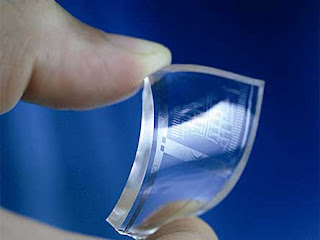It has been 5 months without a post! And though I was developing other pages recently, I was kinda struggling to get materials to write on this blog. Materials to suit my idea of 'my blog'. For you won't get scientific news all the year that you can appreciate and explain at the same time! But then...
Each night I look at the sky and its always marvelous. Right from that primary school boy who gazed at the sky and wondered whether stars were really as big as father told to the person writing this blog at the moment, sky has always held marvels for me. So then, why don't I share it with you? was the question. After all, science is what explains all those reality. Science is what makes a person to marvel and explore those mysteries than to sit idly feeling helpless.
Let me ask you a simple question, have you looked at the sky today? Specially, have you looked at the moon? Because, if you observe night sky in these startings of rainy season, a wonderful phenomenon awaits for you, Lunar halo.
Lunar halo is the formation of a circular ring of one or several colors around the moon whose brightness depends upon the atmosphere and the density of clouds around. So, in a dense and disperses cloudy day you can see wonderful dispersion of light around the moon with all colors of a rainbow. Lunar halo is one of the sufficiently frequent yet beautiful phenomena in the night sky! It is moon with an ornament!
How is a lunar halo formed? The ring that appears around the moon arises from light passing through six-sided ice crystals high in the atmosphere. These ice crystals refract, or bend, light in the same manner that a camera lens bends light. The ring has a diameter of 22° , and sometimes, if you are lucky, it is also possible to detect a second ring, 44° diameter. Thin high cirrus clouds lofting at 20,000 feet or more contain tiny ice crystals that originate from the freezing of super cooled water droplets. These crystals behave like jewels refracting and reflecting in different directions.
Isn't that wonderful?
Now, this is just one wonderful thing about the night sky! Moon itself has lot more wonders with it. There are moonbows , moon dogs and moon pillars! And more :) Night sky is full of wonders. If you just look into the night sky and think how small you are, that very idea can make your problems lighter. Yet, we all have periods in our life, where we have engaged ourselves so much that we haven't cared to look up. We have almost forgotten the beauty of the night sky! And I repeatedly ask myself, why is that?
This article is born out of such thoughts. It is very simple relative to the previous ones and its not on any breakthrough. But it is written to make a humble suggestion to all of you.
Each night I look at the sky and its always marvelous. Right from that primary school boy who gazed at the sky and wondered whether stars were really as big as father told to the person writing this blog at the moment, sky has always held marvels for me. So then, why don't I share it with you? was the question. After all, science is what explains all those reality. Science is what makes a person to marvel and explore those mysteries than to sit idly feeling helpless.
Let me ask you a simple question, have you looked at the sky today? Specially, have you looked at the moon? Because, if you observe night sky in these startings of rainy season, a wonderful phenomenon awaits for you, Lunar halo.
What is a lunar halo and how does it happen?
How is a lunar halo formed? The ring that appears around the moon arises from light passing through six-sided ice crystals high in the atmosphere. These ice crystals refract, or bend, light in the same manner that a camera lens bends light. The ring has a diameter of 22° , and sometimes, if you are lucky, it is also possible to detect a second ring, 44° diameter. Thin high cirrus clouds lofting at 20,000 feet or more contain tiny ice crystals that originate from the freezing of super cooled water droplets. These crystals behave like jewels refracting and reflecting in different directions.
Isn't that wonderful?
Now, this is just one wonderful thing about the night sky! Moon itself has lot more wonders with it. There are moonbows , moon dogs and moon pillars! And more :) Night sky is full of wonders. If you just look into the night sky and think how small you are, that very idea can make your problems lighter. Yet, we all have periods in our life, where we have engaged ourselves so much that we haven't cared to look up. We have almost forgotten the beauty of the night sky! And I repeatedly ask myself, why is that?
This article is born out of such thoughts. It is very simple relative to the previous ones and its not on any breakthrough. But it is written to make a humble suggestion to all of you.
"There are beautiful things happening in the night sky, every moment! Just keep looking!"


